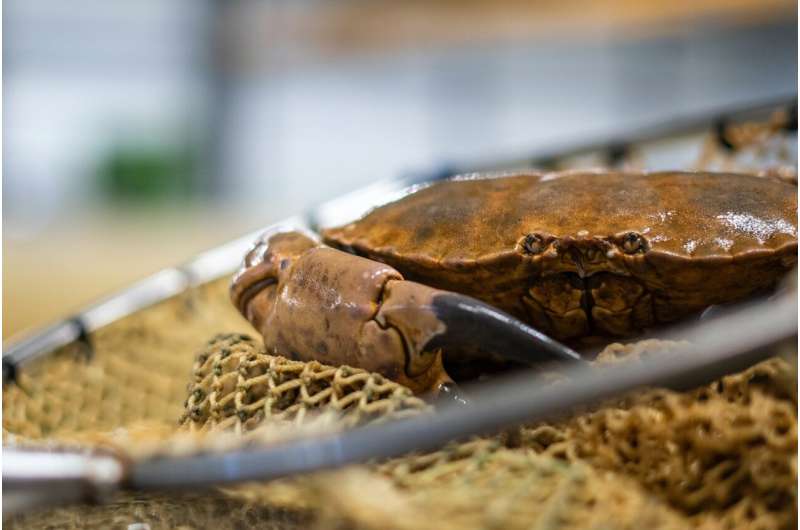Call for 'urgent investigations' following crab and lobster deaths along England's coast

A Parliamentary committee which heard evidence from a Newcastle University academic about mass deaths of crustaceans off the North East coast says further urgent investigations should be carried out.
Following scientific evidence presented by Dr. Gary Caldwell, senior lecturer in applied marine biology, the select committee has written to the Secretary of State Thérèse Coffey, calling for an urgent investigation and further research into the causes of mass die-offs of crabs and lobsters on the North East coast.
Dr. Gary Caldwell said, "We welcome the Committee recommendations and the opportunity to continue working with colleagues from Government Agencies and wider scientific communities."
EFRA response
The letter, signed by the MP Sir Robert Goodwill, chairman of the Environment, Food and Rural Affairs (EFRA) Committee, was written following a hearing on Tuesday, October 25.
It calls for further data and research, also "urgent investigation of the potential sources of pyridine," a review of the dredging activity in the Tees by the Maritime Management Organization (MMO) and until the cause of the mass die-off is known, that the MMO should routinely check for pyridine.
The committee had heard evidence about the potential causes of the mass mortalities of crabs and lobsters during autumn and winter of 2021 off the coast of the Northeast and North Yorkshire, and the impact it is having on fishing communities.
They heard from Dr. Caldwell who along with researchers from Durham, Hull and York universities has undertaken research on the loss of marine life, commissioned by the North East Fishing Collective with funding from the Fishmongers' Company's Fisheries Charitable Trust.
Given their potential to inform public policy, preliminary findings from this work were shared with interested agencies, including EFRA.
The cause of the die-offs was unknown, with suggestions ranging from a toxic algae bloom to the release of poisons from intensive dredging of the Tees estuary.
Early research in the lab revealed high levels of pyridine, a chemical with a long history of release into the River Tees, in the tissues of the dead crabs. However, there were no data on whether pyridine is toxic to crabs. The Fishmongers' Company commissioned Newcastle University to undertake research to fill this knowledge gap.
In this research, edible crabs (Cancer pagurus) were exposed to a range of pyridine solutions, while their behavior, indicators of cellular stress, and survival over periods of up to three days were recorded. At the upper range of tested concentration that was comfortably within the pyridine levels found in the dead crabs, pyridine caused convulsive behaviors, paralysis and death within six hours. The onset of paralysis took longer as the pyridine concentrations were lowered, but mortalities remained high even at lower concentrations.
The research showed that pyridine is highly toxic to crabs—even below the levels recorded by the Environment Agency from the body of dead crabs.
Further modeling showed that pyridine would be quickly transported along the coastline, with areas around Hartlepool and Redcar worst affected, with the potential to kill approximately half of the crab population after only 24 hours of exposure. Levels of pyridine sufficient to kill approximately 10% of the population within three days were predicted to reach as far south as Whitby and Robin Hood's Bay. The timeline of the transport of pyridine along the coast closely matched the timeline of mortalities reported by the fishing community and the general public.
The scientific work has been submitted for independent peer review and publication via normal academic channels, after which they will be openly accessible.
The EFRA letter is available on their website along with the initial response from DEFRA which stated that the Secretary of State has asked Defra's Chief Scientific Adviser to liaise with the Government Chief Scientific Adviser to establish an independent group of external experts to assess the evidence and consider all explanations for sea life mortality, including the possible role of pyridine. It continues that she has asked that this work is completed in a timely fashion, and the findings of the panel will be published.
More information: Chloe L. Eastabrook et al, Determining the toxicity and potential for environmental transport of pyridine using the brown crab Cancer pagurus(L.) (2022). DOI: 10.1101/2022.11.17.516169
Provided by Newcastle University



















